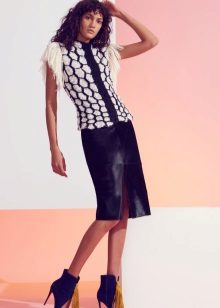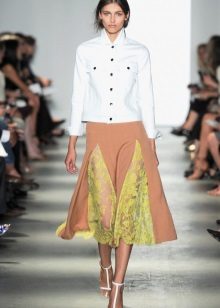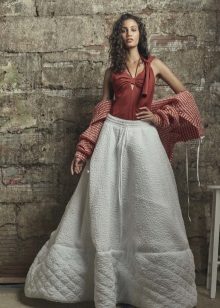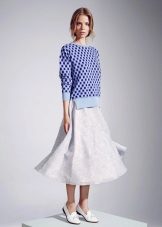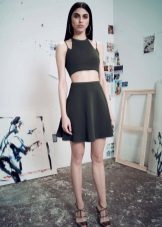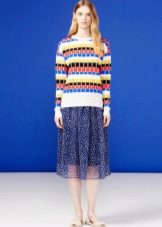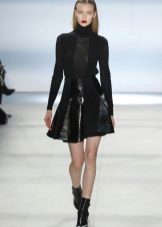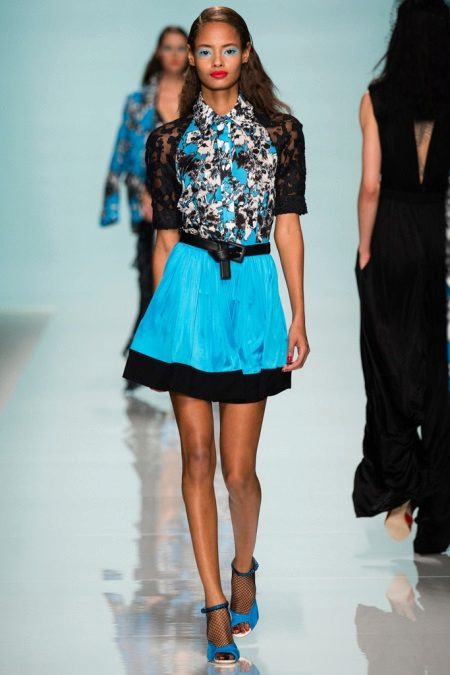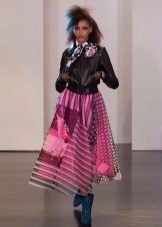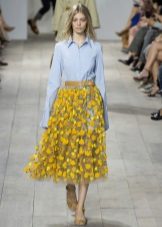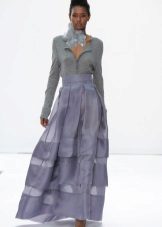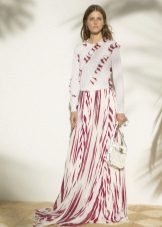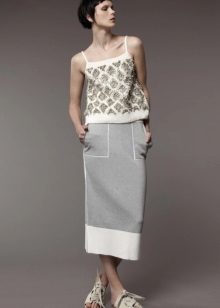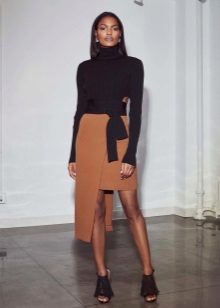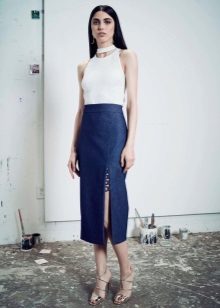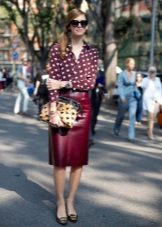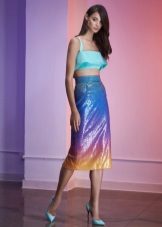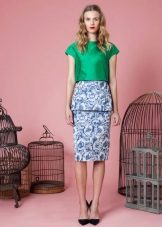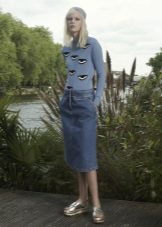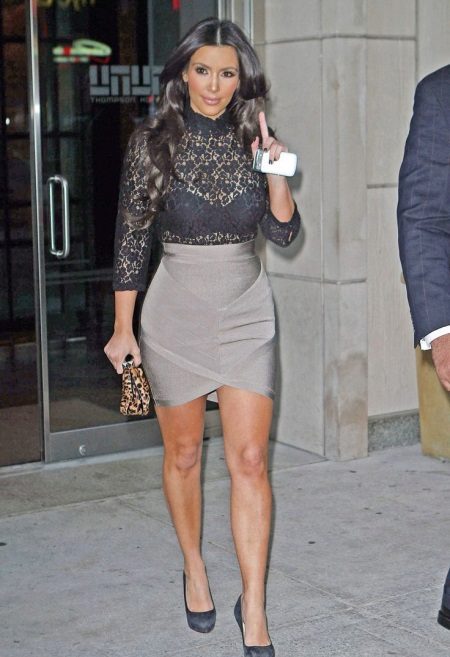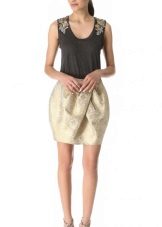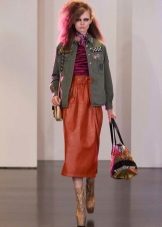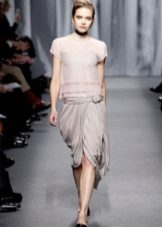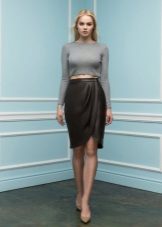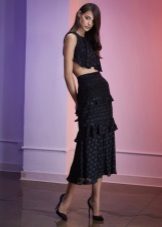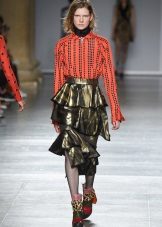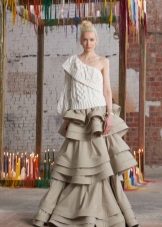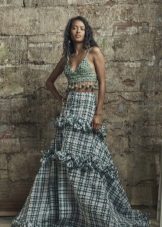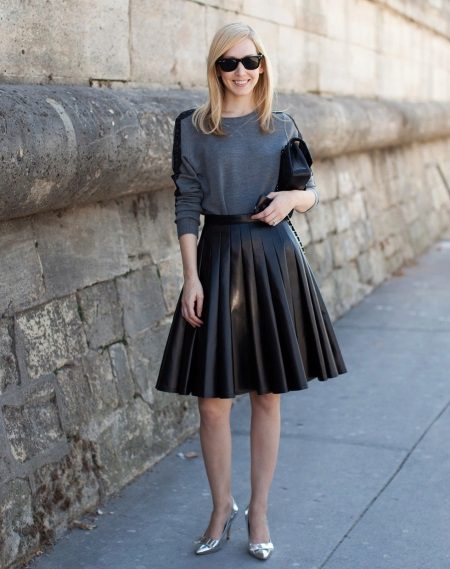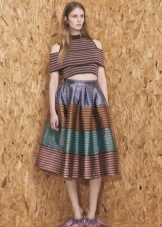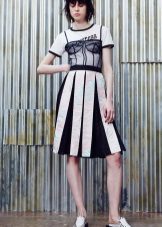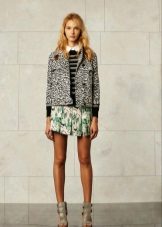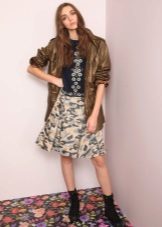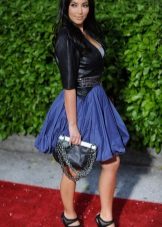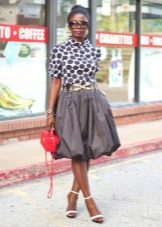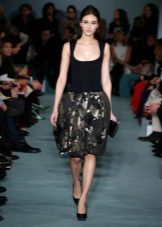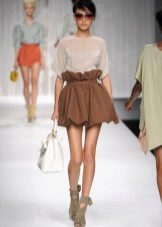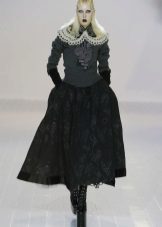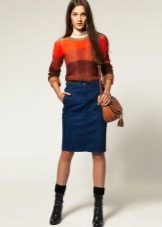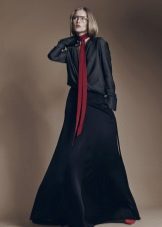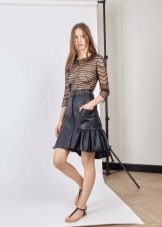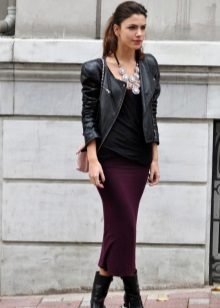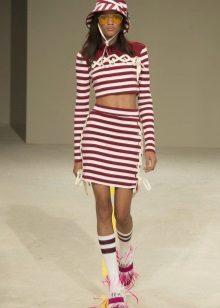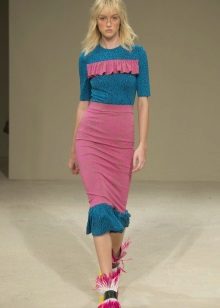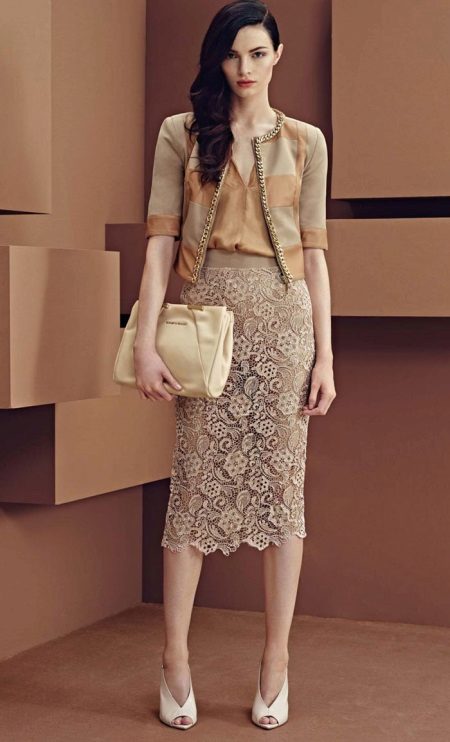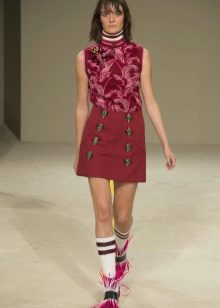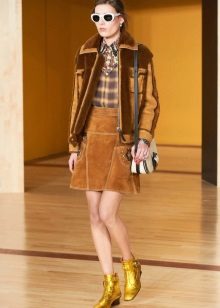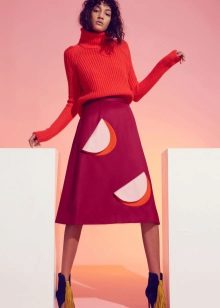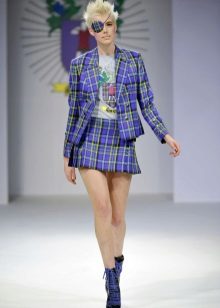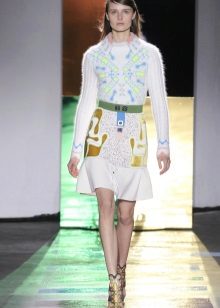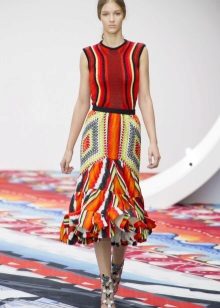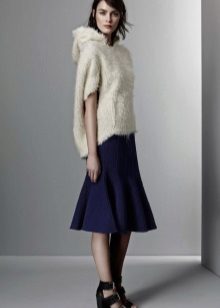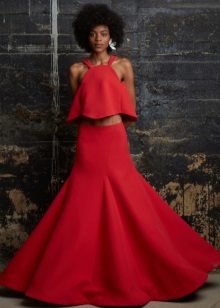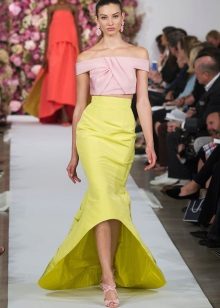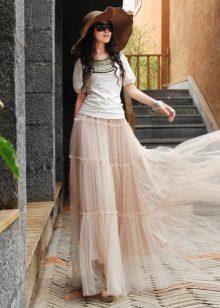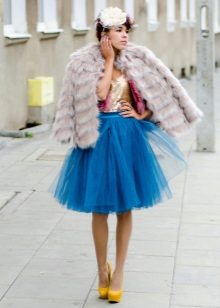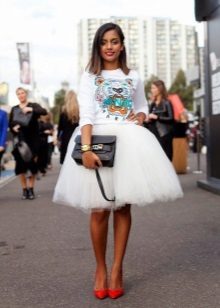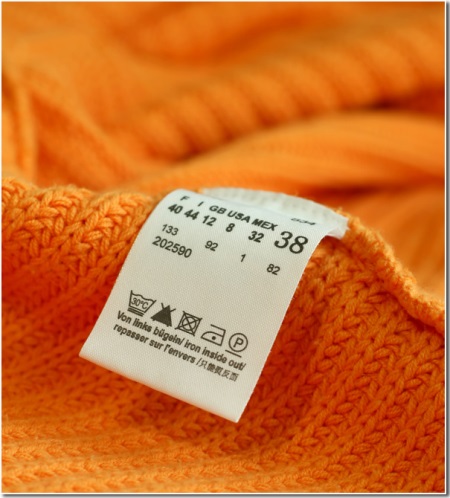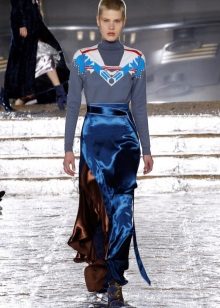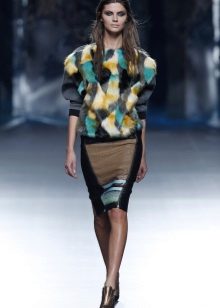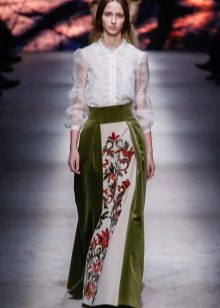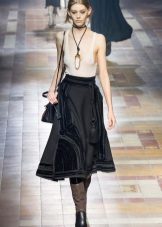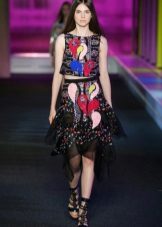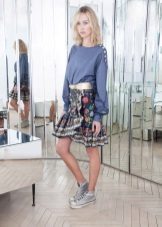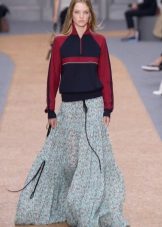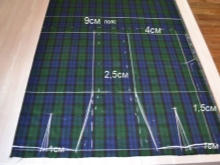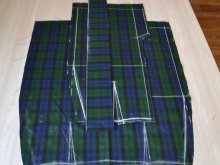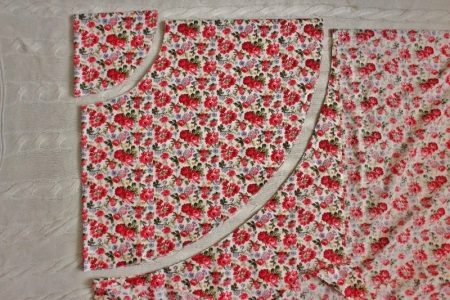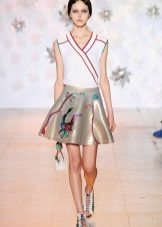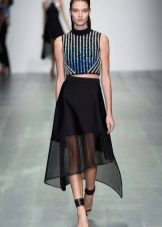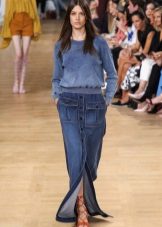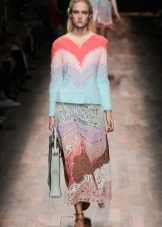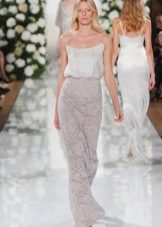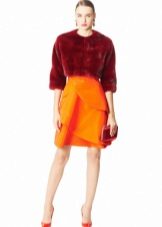If you are going to sew a skirt with your own hands, first of all you need to decide what material will be made from sewing. Selection of a suitable fabric is based on a variety of factors. Among them are the style of the product, the nuances of the cut, the purpose of the skirt, the desired color, and the type of the figure.
The choice of fabric based on the style
Sun and half sun
For skirts of this style select different materials depending on the length of the product. Especially popular are cambric, chiffon, thin types of knitwear and wool.
The silk skirt looks attractive.
Skirts of such a cut of translucent materials look good, especially if they are sewn multi-layered.
Pencil
For skirts of this type, a dense, not losing shape is selected, which should not be very soft or too thin.
Suit fabric is a good option, which can be natural (it is very wrinkled and can sit) or mixed (this fabric is easier to clean).
Pencil skirts are also sewn from dense knitwear, thick silk, tweed, flax, velveteen, cotton.
Tulip
This style requires the use of a fabric that will drape well and form soft folds. It is important that the fabric flowed and not bristled.
A frequent choice is satin, silk, cotton material with the addition of stretch, viscose, wool.
With frills
The fabric is selected taking into account the fact that the shuttle was represented by a beautiful smooth line, and not protruded to the sides. Most often, models with such a finish are sewn of chiffon, cotton, and various dress fabrics.
With folds
For such skirts with pressed pleats, you should purchase a sufficiently dense material that can hold a shape. It should not be voluminous or loose. More often preferred synthetics or mixed fabrics.
If the pleated skirt is summer, the material will be movable and light. For the winter version, pay attention to dress and costume fabric, as well as wool.
Balloon
For such a skirt is required to purchase a non-flowing and not hanging down fabric. The material must hold the form to the product turned out the right amount.
With pockets
The best option for such models would be thick fabrics, such as jeans, satin, flax or corduroy. Such materials can be natural or with the addition of elastane.
Narrow
The most important fabric criteria for such a skirt will be softness and elasticity. The fabric should not wrinkle and go to bed with creases.
The best choice is knitwear of medium density. Often choose soft lace.
Trapezium
This skirt is sewn from materials holding a form. A good choice would be a cambric, velvet, chintz, denim, jacquard, knitted fabric of medium density.
Year
The skirts of this style are sewn from loose materials. Silk and viscose, as well as fine cotton will work well. A good choice for models of the "year" would also be denim or jacquard.
Tutu
Such skirts are traditionally made of airy and translucent fabrics. The most popular tulle, mesh and chiffon.
Popular types of fabrics in density and thickness
Choosing fabric for a skirt, you can see on its label many different characteristics. Among them can be noted the surface density of the material. This parameter will tell you how durable the fabric is - the higher the value, the longer the skirt of this material will serve.
Also on the label can be indicated the thickness of the fabric.This characteristic is influenced by the density of the yarn, the type of weave of the fibers, the finishing of the fabric and other nuances. The thicker the fabric, the higher its durability, thermal protection and wear resistance.
Winter and demi-season models of skirts are made from thicker materials. These include thick wool, velveteen, dense knitwear. For summer skirts less thick fabrics are used, for example, chiffon, batiste, crepe de chine, thin flax.
How much fabric you need per skirt: calculation technique
Usually, a piece of material with a standard width (150 cm) of such length that corresponds to the desired length of the skirt plus a few centimeters of stock for hemming is purchased for sewing the skirt. For example, for a straight skirt take it one length plus 10 cm, which is enough for the seams, hem and belt.
For a more accurate calculation of the required amount of fabric, you should consider your height, fullness and other factors that increase the consumption of fabric, for example, the presence in the model of patch pockets or frills. If the width of the material is less than the standard, the flow rate will also increase.
Most of the fabric is required for skirts "sun", as well as models with multiple layers or folds. Sometimes you have to buy material up to five meters long. To calculate the exact consumption, it is best to build a pattern on paper and lay it out taking into account the cutting of the material.
So you can clearly see how much fabric you need to create a particular skirt model.
Tips for beginners
- If you do not have experience in self-manufacturing skirts, you should not choose a fabric with a complex pattern or checkered print.
- Beginners should not work with chiffon, leather, jacquard, velvet or satin. Jeans, viscose, knitwear, silk, linen, gabardine and thick cotton are considered more suitable fabrics for the first skirts with their own hands.
- If you are planning to sew a long skirt, do not buy too thick material for it. A good choice would be wool, linen, silk or denim.
- Too dense fabrics are also not recommended for sewing skirts, which will become part of the evening dress. The best materials for elegant skirts called satin, lace, silk, velvet, lace.

